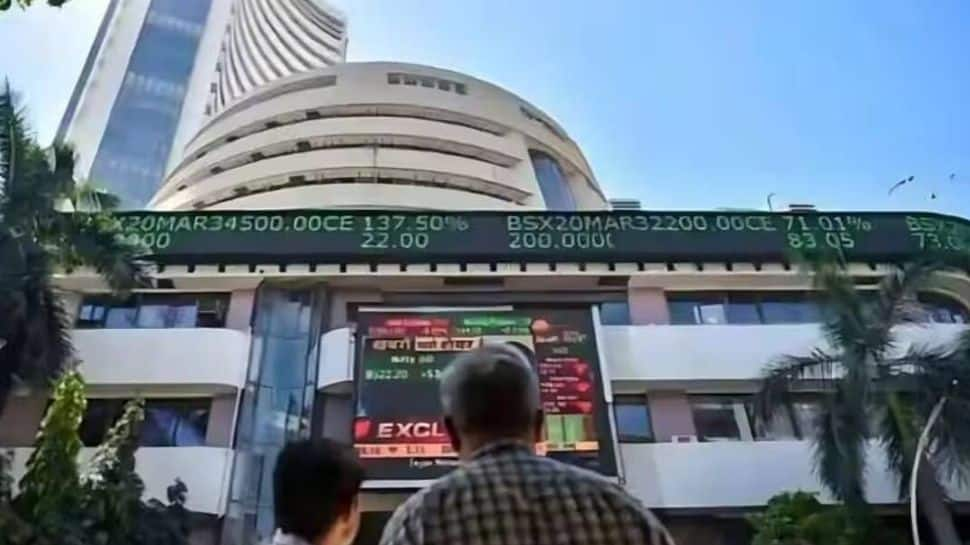Business
Pakistan–ASEAN trade reaches $11.5bn but deficit widens in 2025 | The Express Tribune

Indonesia, Malaysia, Philippines drive fastest import growth as Islamabad pushes for FTAs to rebalance trade
ISLAMABAD:
Pakistan’s trade volume with the Association of Southeast Asian Nations (ASEAN) stood at $11.5 billion in 2024, a figure officials say remains below potential and requires rationalisation. Despite steady engagement, the trade deficit in 2025 continues to widen in favour of ASEAN members.
Pakistan’s exports to ASEAN were approximately $3.5 billion in 2024, while imports reached about $8 billion. Most of this trade is concentrated in five key ASEAN economies: Indonesia, Malaysia, Thailand, Vietnam and the Philippines.
Islamabad is pursuing multiple trade frameworks to strengthen these ties. These include a Free Trade Agreement (FTA) with Malaysia, a Preferential Trade Agreement (PTA) with Indonesia, and ongoing negotiations for an FTA with Thailand and a PTA with Vietnam. The government is also pushing for technology transfer, value addition and greater ASEAN investment in Special Economic Zones under CPEC to reduce the imbalance.
Officials emphasise Pakistan’s strategic position as a bridge linking ASEAN to Central Asia, the Middle East, Western China and the Indian Ocean, with policy and infrastructure upgrades aimed at making Pakistan a competitive production base for ASEAN companies.
Pakistan’s exports to ASEAN in 2025 largely comprise textiles, such as non-knit men’s and women’s suits and knit sweaters, along with rice, seafood, house linens, leather goods, cotton and other agricultural items, including pulses and tree nuts. Textiles account for roughly 68% of exports, reflecting both concentration and market demand.
Indonesia, Malaysia and the Philippines recorded the fastest growth in imports from Pakistan in 2025. Malaysia’s demand for textiles, rice and leather goods increased under the FTA, while Indonesia continued implementing the PTA signed in 2012. The Philippines also posted significant growth, particularly in textiles and agricultural imports. Thailand and Vietnam showed notable but slower import increases.
The broader rise in trade is driven by bilateral agreements, Pakistan’s diversification efforts and improvements in connectivity and value-added production in sectors such as information technology, textiles and food products.
FPCCI President Atif Ikram said ASEAN economies offer vast potential for engaging Pakistan’s 250-million-strong market.
Business
Trade outlook: India’s exports hold steady amid Donald Trump tariffs; new markets offset US slowdown – The Times of India

India’s export performance has remained steady even as global markets face volatility, according to SBI Research, which shared its assessment. As per news agency ANI, the report states that merchandise exports between April and September in FY26 touched $220 billion, a 2.9 per cent rise from $214 billion in the same period last year. Exports to the United States also increased by 13 per cent to $45 billion, although shipments in September dipped nearly 12 per cent year-on-year.The US continues to be a key market, but its share in India’s total exports has fallen since July 2025, reaching 15 per cent in September. SBI Research highlights mixed sectoral trends. The US share in India’s marine product exports declined from 20 per cent in FY25 to 15 per cent in September, and its share in precious stones fell sharply from 37 per cent to 6 per cent. However, both marine products and ready-made cotton garments still registered growth during the April–September period.At the same time, as per ANI, India’s export basket has become more geographically diverse. Countries including the UAE, China, Vietnam, Japan, Hong Kong, Bangladesh, Sri Lanka and Nigeria saw higher shares across several product groups. SBI Research suggests that some of this may indicate indirect routing of Indian goods, noting that Australia’s share in US imports of precious stones rose from 2 per cent to 9 per cent, while Hong Kong’s share increased from 1 per cent to 2 per cent.On the trade policy front, India is grappling with higher US tariffs under the Trump administration, which have hit textiles, jewellery and seafood — particularly shrimp. To support exporters, the government has approved Rs 45,060 crore in assistance, including Rs 20,000 crore in credit guarantees.The rupee also faced pressure, slipping to 89.49 against the dollar on Friday amid global financial turbulence. According to ANI, the Reserve Bank of India reiterated that it does not defend any fixed exchange rate, and analysts see the decline as a temporary adjustment.India’s current account deficit narrowed to 0.2 per cent of GDP in Q1 FY26, improving from 0.9 per cent a year earlier, supported by services exports and remittances. SBI Research expects the deficit to widen slightly in the next two quarters before turning positive by fiscal year-end, projecting a full-year deficit of 1.0–1.3 per cent of GDP and a balance-of-payments gap of up to $10 billion.
Business
Toothbrush packs to go to ‘most vulnerable’ in North Northants

Toothbrush and toothpaste packs worth a combined £20,000 are to be given to foodbanks and other organisations for distribution to vulnerable people.
North Northamptonshire Council said the funding from Northamptonshire NHS Integrated Care Board would help people “who need it the most” fight tooth decay.
Martin Langford, Corby Foodbank’s manager, said the packs would “make a real difference to how people look and feel”.
Brian Benneyworth, the Reform UK council’s executive member for health and leisure, said: “These toothbrushing packs are a simple but powerful way to help those who are most vulnerable, providing not just the tools but the dignity of self-care.”
Mr Langford said: “Access to basic hygiene items, such as toothbrush packs, is often underestimated but they make a real difference to how people look and feel.
“It strengthens our ability to reach those most in need and ensures we can continue making a positive impact within the community.”
Jane Bethea, director of public health, communities and leisure at the council, said: “Poor oral health is a major public health concern and can have a negative impact on our overall health and wellbeing and affect what we eat, how we communicate and our self-confidence.”
Guidelines recommend that people brush their teeth twice at day. Poor dental hygiene can led to tooth decay and gum infections, which can lead to tooth loss and gum disease.
Mr Benneyworth said: “Under current financial pressures, due to the cost of living crisis, some households are having to make very difficult choices about what they can and cannot buy.
“In these situations, items such as new toothbrushes and toothpaste could be seen as less important than essentials such food and heating.”
Business
Nifty, Sensex Continue Rally For Second Week Despite FII Outflows

New Delhi: Indian equity benchmarks made marginal gains for the second week, supported by stronger second quarter (Q2) earnings, easing inflation and optimism around the India-US trade negotiations. Benchmark indices Nifty and Sensex edged higher 0.68 and 0.50 per cent during the week to close at 26,068 and 85,231, respectively.
Analysts said that a moderation in FII selling due to expectations of earnings upgrades in H2 FY26 also supported the rally. However, markets turned volatile on Friday amid weak global cues. The Nifty fell after failing to cross its previous all-time highs of 26,277, ending its two-day advance.
Broader indices underperformed, with the Nifty Midcap100 and Smallcap100 ending the week down 0.76 per cent and 2.2 per cent, respectively. Though IT stocks faced selling pressure due to weakness in the US tech shares, it was the biggest weekly gainer. Nifty Auto and Services followed as the secoral gainers during the week. On Friday, metals and realty were the worst hit, both dropping over 2 per cent, followed by PSU banks, financial services and media.
A better-than-expected non-farm payroll dimmed hopes of a US Federal Reserve rate cut in December putting pressure on global equities. Resultantly gold also witnessed selling pressure while INR declined to a new low. The oil prices declined due to the US’s renewed push for a Russia-Ukraine peace proposal.
“The market may witness some profit booking in the near term if the pressure on Indian rupee persists. In the week ahead, investors will also have a close vigil on trade developments and economic data like IIP and Q2 FY26 GDP data to get the market direction,” said Vinod Nair, Head of Research, Geojit Investments Limited.
Analysts said that they expect markets to remain firm next week supported by buying on dips, improving demand outlook in Q3 and resilient flows.
-

 Tech7 days ago
Tech7 days agoNew carbon capture method uses water and pressure to remove CO₂ from emissions at half current costs
-

 Politics1 week ago
Politics1 week agoBritish-Pakistani honoured for transforming UK halal meat industry
-

 Business7 days ago
Business7 days agoThese 9 Common Money Mistakes Are Eating Your Income
-

 Sports7 days ago
Sports7 days agoTexas A&M officer scolds South Carolina wide receiver after touchdown; department speaks out
-

 Fashion1 week ago
Fashion1 week agoAfter London, Leeds and Newcastle, next stop Glasgow for busy Omnes
-

 Sports1 week ago
Sports1 week agoApple scrapping MLS Season Pass service in ’26
-

 Business1 week ago
Business1 week agoWhat’s behind Rachel Reeves’s hokey cokey on income tax rises?
-

 Tech1 week ago
Tech1 week ago$25 Off Exclusive Blue Apron Coupon for November 2025












